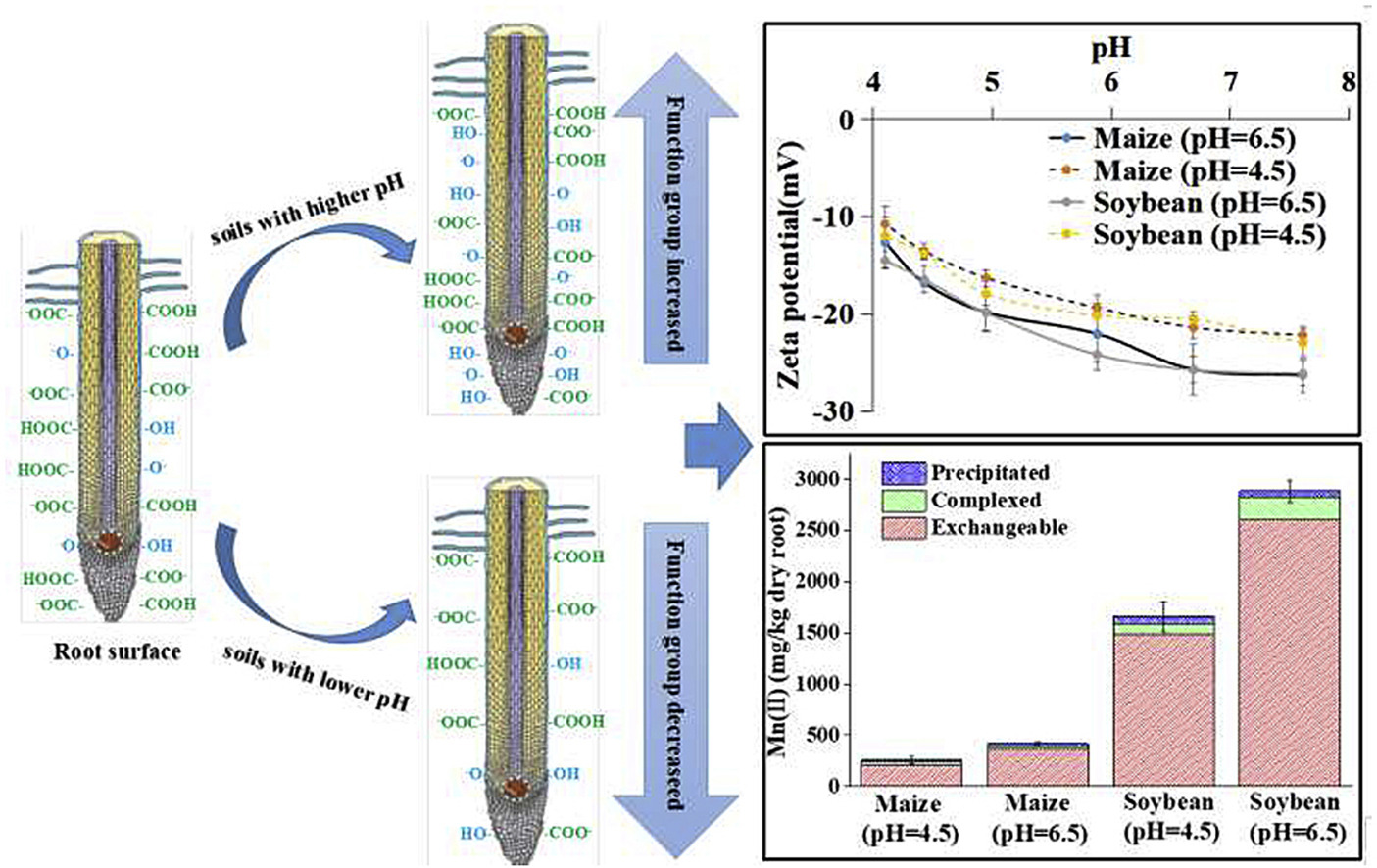Plants alter surface charge and functional groups of their roots to adapt to acidic soil conditions
- aState Key Laboratory of Soil and Sustainable Agriculture, Institute of Soil Science, Chinese Academy of Sciences, P.O. Box 821, Nanjing, China
- bCollege of Advanced Agricultural Sciences, University of Chinese Academy of Sciences, Beijing 100049, China
Abstract
The rapid increase in soil acidification rate has led to a decrease in global agricultural productivity owing to the debilitating effects of Al and Mn toxicities. In this study, we investigated the adaptation of plants to acidic conditions by examining the behavior of plant roots grown in hydroponic solution and pot experiments at different pHs. The Mn(II) sorption by the roots was investigated and the mechanisms involved were deduced by analyzing the changes in the zeta potential and functional groups on the root surface. The exchangeable, complexed, and precipitated Mn(II) on plant roots were extracted sequentially with 1 M KNO3, 0.05 M EDTA-2Na, and 0.01 M HCl. The results of hydroponic experiment indicated that plant roots subjected to NH4+ treatment carried lower negative charge and fewer functional groups owing to acidic pH condition induced by NH4+ uptake of roots, when compared with plant roots treated with NO3−. Similarly, in pot experiments, the surface negative charge and functional groups of plant roots cultured in soils with lower pH were fewer than those on plant roots cultured in soils with higher pH, with the former presenting less exchangeable and complexed Mn(II) sorption than the latter. Thus, alterations in the charge properties and number of functional groups on the surface of plant roots are some of the mechanisms used by plants to adapt to acidic soil condition.

